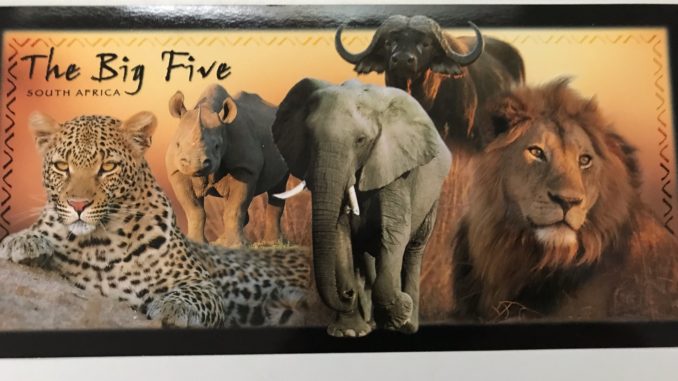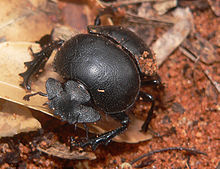
The Garbage Gobblers
by Libby James

Kruger National Park in South Africa has a huge number of interesting and exotic animals. People who go there like to see if they can seek out the Big Five–a lion, a Cape buffalo, a rhinoceros, an elephant and a leopard. They are known as the most difficult animals to hunt and it is not easy to find them all in a single visit.
But there is one small animal that is hard to miss. Dung beetles are everywhere and while they don’t get very much attention, they do an important job in the park and wherever they live.
The first one I saw was busy rolling a ball of dung a least ten times its size to some unknown location. The beetle had a friend who shared the work. One rode on top of the dung ball while the other pushed it along until the beetle on top was moved forward. His weight helped to pull the ball along. Then the beetles changed places and the pusher had a free ride for a while.
Why were these beetles so interested in dung? Why were they moving it and where were they going?
Dung beetles have been around for almost as along as dinosaurs. There are 7,000 different species of dung beetles, all small busy workers who are most active at night.
There are three kinds: Tunnelers burrow under a piece of dung and live there. Dwellers search out the best pile of dung they can find and make their home there. Rollers, the kind I met in Kruger Park, build a burrow and then work hard to transport dung to their home.
Dung beetles never go hungry and they always have a place to live. In Kruger Park, their favorite food and home-building material is elephant dung but in other parts of the world they are happy with cow, sheep, and horse dung. Once, some people researching the beetles saw 16,000 of them descend on a big pile of dung. They either moved or ate every bit of it in less than two hours.
These beetles turn dung into natural fertilizer, help to keep the fly population down, and control the spread of bacteria. They are super recyclers, using waste material for their food and shelter.
The largest dung beetles can move 50 times their own weight. There is a kind of dung beetle that rides of the back of large snails and feeds on the snail’s dung. There are thief beetles that eat from and lay their eggs on dung balls collected by other beetles. Sometimes they are rude enough to eat the eggs of the beetle who lives in the dung ball.
Kruger Park would be a dirtier, smellier place without the busy little garbage gobblers who live there.
Support Northern Colorado Journalism
Show your support for North Forty News by helping us produce more content. It's a kind and simple gesture that will help us continue to bring more content to you.
BONUS - Donors get a link in their receipt to sign up for our once-per-week instant text messaging alert. Get your e-copy of North Forty News the moment it is released!
Click to Donate